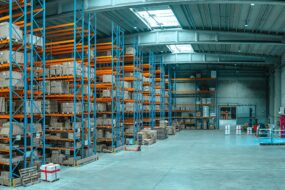Contents

Demand forecasting can better help you to understand what your customers want and when they want it, so you can make more informed business supply decisions.
Demand forecasting is not going to be perfectly accurate all the time, but by using historical order data, you can better predict surges and lulls in your sales. This can help you determine how to best prepare your budget and develop a pricing strategy as well as plan and schedule your product production.
One of the major benefits of demand forecasting is the optimization of your inventory management. Having too much on hand can cost you money with storage, while not having enough inventory can lose you sales. With demand forecasting, you can collect and analyze data and information to drive sales and increase profit margins.
What Is Demand Forecasting?
Demand forecasting uses historical data and predictive analysis to try and predict future trends and customer demands. With demand forecasting, you can look at patterns and trends in customer behaviors and order history to estimate future sales and revenue. This can help you to make more informed decisions related to inventory supply and budgeting.
Demand forecasting can help you to understand customer needs and expectations. With this understanding, you can fulfill them accordingly to better manage your product supply chain.
Benefits of Demand Forecasting for Your Business
Demand forecasting can be used at any level based on your business growth plans. For example, one company can use demand forecasting to manage a conservative growth plan, while another may use it to diversify for a more aggressive growth plan.
Demand is what the customer wants. In order to fulfill customer expectations, you need to know what they want and when they want it. With this knowledge, you can make more informed decisions on what to spend on marketing, production, staffing, and inventory storage.
Demand forecasting can help you improve the following:
- Production lead times
- Operational efficiency
- New product launches
- Cost savings
- Customer experience
Demand forecasting is important for your business, as it can help you to better prepare your budget, plan and schedule product production, help you manage inventory storage, and develop an effective pricing strategy.
Aids With Budget Preparation
Demand forecasting can help you formulate strategic and operational plans for your business, including making sound financial decisions and mitigating risks. This impacts profit margins, operating costs, staffing, inventory accounting, and the overall money you spend to run your business.
Helps With Planning & Scheduling Production
Your order fulfillment needs to be aligned with your pre-launch product marketing. By using demand forecasting, you can be sure to provide the customer with what they want when they want it. Demand forecasting can help you to ensure that you experience fewer stockouts and always have the right amount of inventory on hand.
Improves Inventory Management
The more inventory you have in stock at a time, the higher your inventory storage costs will be. With demand forecasting, not only can you be better prepared to fulfill customer orders, but you can also ensure that you are not carrying too much inventory at a time. This allows for better cost-efficiency.
Optimizes the Development of Pricing Strategy
Not only do you need to be able to forecast demand, but you also need to be able to formulate competitive pricing based on the demand. For example, offering short-term promotional pricing can increase demand, while limited supply of a high-demand item can be billed as an exclusive offer with higher pricing. As supply increases or decreases and demand levels out, you will also need to adjust your pricing.
Types of Demand Forecasting
All demand forecasting uses data analytics over specific periods of time, but there are a variety of different types of demand forecasting, including macro-level, micro-level, short-term, and long-term demand forecasting.
Macro Demand Forecasting
Using macro-level demand forecasting, you look at general economic conditions to recognize shifts in the market, disruptions to commerce, and external forces.
Micro Demand Forecasting
Micro-level demand forecasting is more specific and can be tailored to a certain customer demographic, business, or industry.
Short-Term Demand Forecasting
Short-term demand forecasting is performed for a year or less, informing the day-to-day operations by looking at sales for under a year.
Long-Term Demand Forecasting
Demand forecasting done for more than a year is considered long term. It can be used to identify trends and plan for things such as annual patterns, seasonality, production capacity, and expansion. Long-term demand forecasting helps to develop a long-term business strategy.
What Factors Influence the Customer Demand Lifecycle?
Your supply chain, sales, and marketing strategy all need to work together for successful demand forecasting. There are several things that can play a role in the customer demand lifecycle, including the type of goods you are selling, where your customers are and where goods are manufactured and shipped from, your competition, and seasonality.
Types of Goods
Depending on what products or services you are selling, demand forecasting can differ. For example, if you are selling perishable goods that need to be moved quickly, your demand forecasting will be very different than if you sell monthly subscription boxes.
You can use the following data to drive more recurring revenue and get a better idea how to bundle or group items:
- Total amount of purchases customers buy from you over time and across all of your sales channels (lifetime value of your customers)
- How much your customers spend each time (average order value)
- How one SKU can drive demand for another
Geography
Managing your retail supply chain includes optimizing fulfillment and distribution centers, which can often mean splitting inventory based on customers’ geographic locations. Inventory forecasting and the order fulfillment speed will depend on where your orders are manufactured and shipped from and how far the product has to travel to reach the customer.
Competition
Competition directly impacts demand as the more options a customer has, the harder you will have to work to convince them to buy from your business. Up-and-coming competitors can also influence this demand, so it is important to stay ahead of trends as much as possible and work with an agile demand forecasting model so you can quickly adjust when needed.
Seasonality
When order volumes change at a specific time of year, this is called seasonality. It can be related to a big shopping day such as Black Friday, the holidays, certain events, or if your product is more popular in a certain month or time of year.
Demand forecasting can help you to recognize peak seasons and when spikes in sales are likely to occur, so you can plan accordingly. You can then drop inventory during slow times and increase inventory during the peak season.
Steps for Forecasting Demand
To accurately forecast demand, you will need a strategy that is agile and flexible but also able to provide you with a long-term approach for planning and supporting your business. The following steps can help:
1. Set your objectives.
You will need to decide what kind of demand forecasting will best suit your business needs and objectives. It needs to have a dedicated and clear purpose.
You will need to choose what time period, general category, specific product, or set of people for which you are wanting to forecast demand. Demand forecasting can help you to predict what a customer will purchase, how much, and when they will buy it.
Your demand forecasting will need to work for your product marketing team, financial planners, operations, and logistics teams equally. You will need to have clear goals for effective demand capacity planning that can help to influence the decision-making for your business processes.
2. Record and collect your data.
Data from multiple sources, including different sales channels and market conditions, will need to be collected and integrated to provide a clear picture of your product demand and therefore your sales forecasts. It is necessary to be able to see what products are being ordered when and from what sales channel to accurately forecast demand.
You should also look closely at e-commerce return rates, which can add up. If specific items are being consistently returned, for example, it is time to reevaluate that product. Collecting and recording this data can help you to better forecast growth and match this up with production.
3. Measure and analyze the data.
Either using automation and predictive analytics or analyzing data manually, you will need something that is repeatable. You need to be able to check what you have forecast versus what your actual sales were to adjust future planning.
As your company grows and evolves, you may need to track additional information to help reduce stockouts and ensure you have enough product in your inventory to keep up with demand.
4. Update your budget accordingly.
Once you have been through a round of demand forecasting (the time you set for the forecasting), you can then update your budget and set your next forecast. Demand forecasting can help you to allocate your budget funds based on your business and growth goals.
Demand Forecasting FAQs
Demand forecasting can help you to budget more accurately, optimize your inventory management and supply chain, plan marketing strategies, and meet your customers’ expectations for an enhanced customer experience.
What is demand forecasting?
Demand forecasting collects and analyzes order data from a specific period of time to predict sales and revenues for the future. Demand forecasting can help you to make more informed business decisions regarding inventory management and planning, targeted marketing, budgeting, and product sales.
Why do I need demand forecasting?
Demand forecasting is essential for managing staffing, production, marketing, and inventory management. With demand forecasting, you can improve your production lead time, save money, optimize operational efficiency, launch new products, and offer a positive customer experience.
What is the main purpose of demand forecasting?
The main purpose of demand forecasting is to predict future demand for a particular product or service.
How do I manage demand forecasting?
You can do demand forecasting in a variety of ways, from more general (macro-level) to more specific (micro-level) or for short-term or long-term time periods. All demand forecasting models analyze data over a specific period of time to support future business decisions.
Can a 3PL help with demand forecasting?
You can outsource your order fulfillment to a 3PL, which can use advanced technology and robust data analytics to help with inventory control and demand forecasting.
References
Predictive Big Data Analytics for Supply Chain Demand Forecasting: Methods, Applications, and Research Opportunities. (July 2020). Journal of Big Data.
Learn more about Manufacturing
Logistipedia is where you can learn more about Manufacturing.




